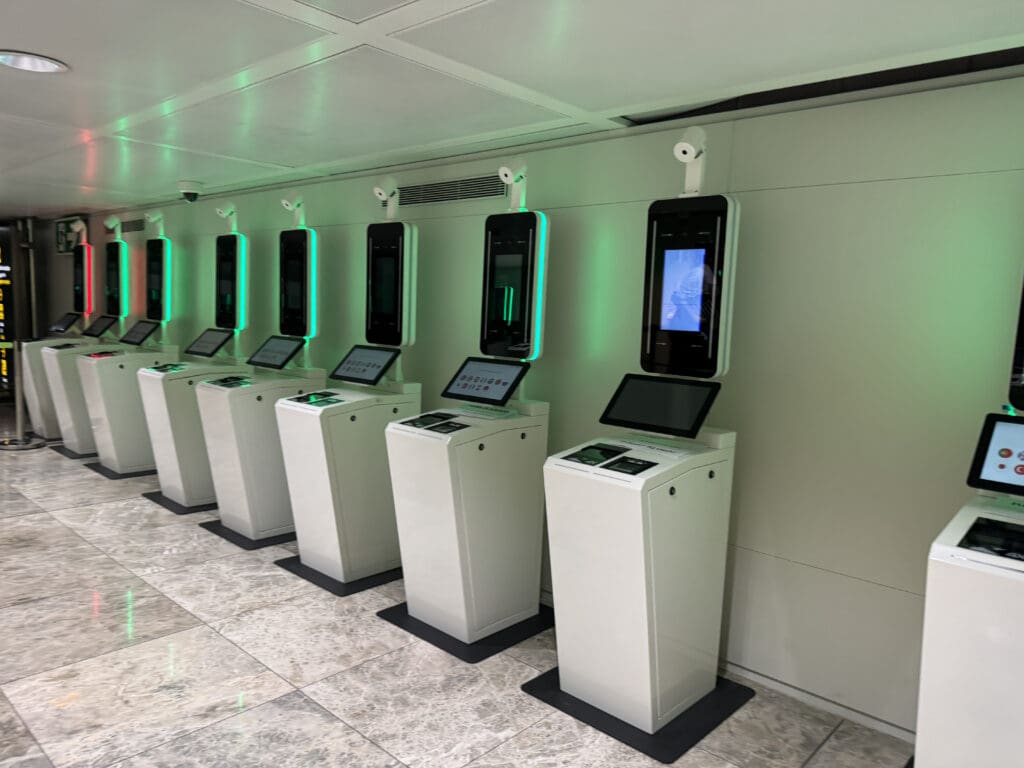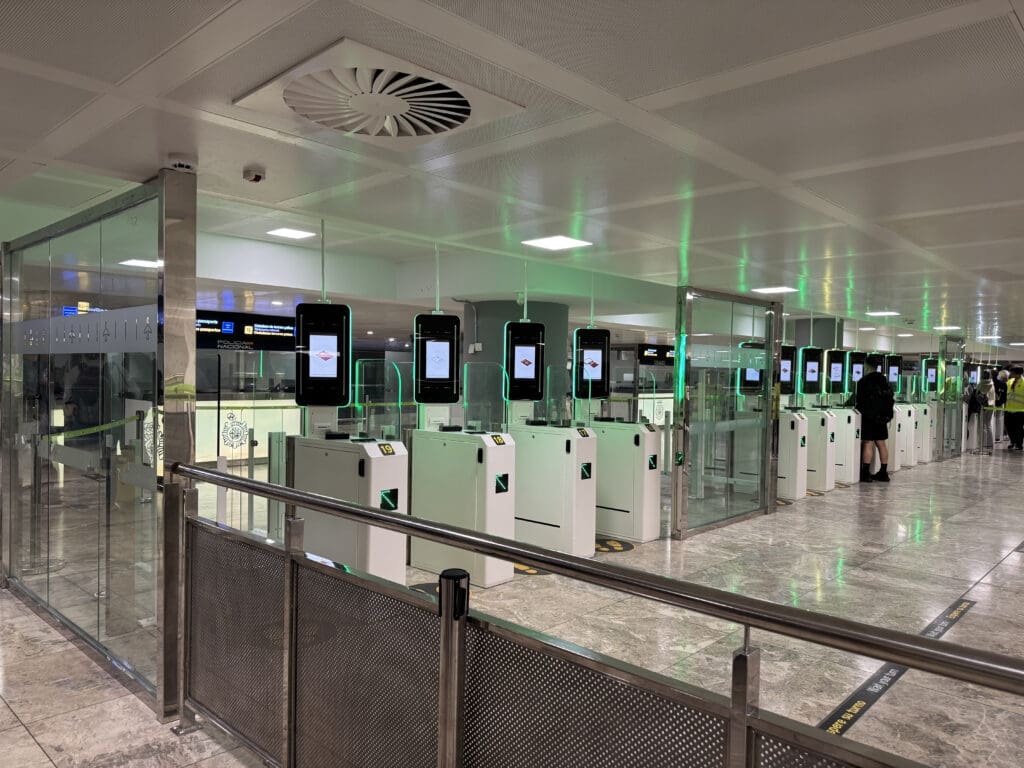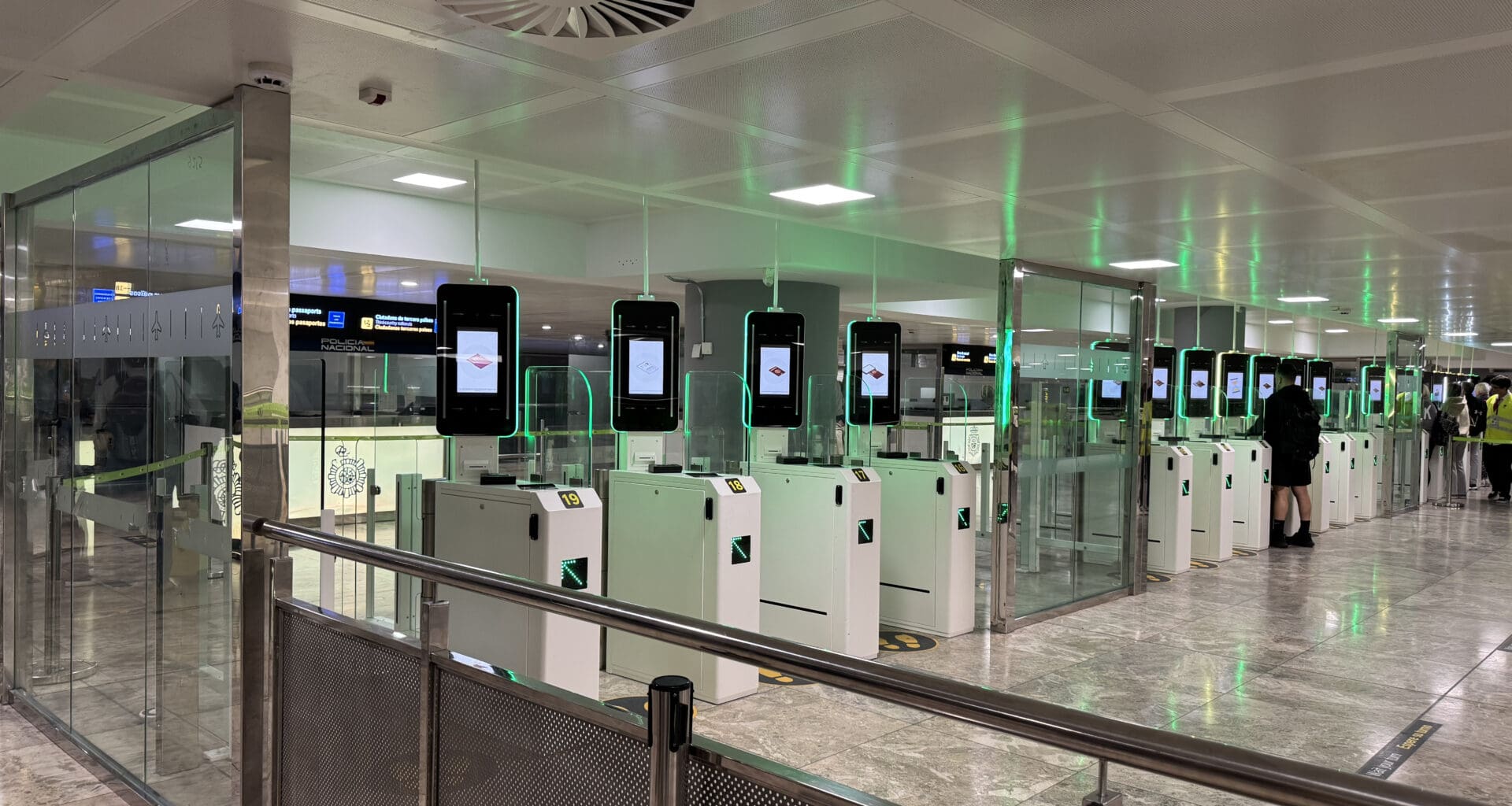In October the EU area introduced a digital fingerprinting system, where non-EU citizens could use e-gates to enter and leave the Schengen area. To me, that sounded good in theory, since all automation in the immigration process speeds up the process. Unfortunately, there were multiple reports of machines malfunctioning causing hour-long queues both at departure and arrival, causing people to miss flights and connections.
Last weekend I flew into the EU via Alicante Airport, and out via Madrid Airport. Both airports had the new EU EES machines active in some way. I thought I’d quickly share my experience using (or not using) the machines.
Alicante Airport: No queue, but no go
I arrived at Alicante Airport at around 7 PM after my flight from London Gatwick, and we were the first of a bank of non-Schengen flights to arrive. This meant that there were many machines available at our disposal, and a vast majority (but not all) of them were working.
We were first asked to register our passports for the EES system, and I approached a machine. I was asked for my consent to use my personal information, before inserting my passport.

Alicante Airport EES Registration Machines
It then asked for my visa. I have a Hong Kong passport, and Hong Kong citizens haven’t needed a Schengen visa for short stays since April 2001. Clearly there’s something going on here with the number of countries listed as visa-free.
I told one of the staff members that I shouldn’t have been asked for a visa, and he just signalled me to go to the manual line. There were lots of EES e-gates available, though I wasn’t able to use any of them – it simply mentioned “passport not registered”.

Alicante Airport EES e-Gates
The 10-minute long line wasn’t too much of a wait, though it was long enough for me to learn that the machines weren’t working for everyone either.
Madrid Airport: Sad, abandoned month-old machines
Madrid Airport was the first Schengen area airport to implement the EES system, though they weren’t using it at all on the morning I was flying out of Terminal 1. Everything was processed manually, which once again wasn’t a big issue, since it took a matter of minutes.

Sad unused EES machines at Madrid Airport
Surely this could have been a better planned rollout
The EU EES system is currently being rolled out at various airports, and the rollout is estimated to be completed by April 10, 2026. After this, no passport stamps will be used when entering or exiting the Schengen area.
The EES isn’t new – Singapore also uses a very similar autogate system for all travellers (albeit with prior enrolment), and a few other countries have had e-gates for a while, including Australia, New Zealand, the UK, and even some Schengen countries such as Italy and France. Surely there should have been more due diligence done when quality controlling these machines, whether that be the individual software (e.g. figuring out which passports didn’t need a visa for short stays), or whether the machines worked at all? I see various wait times for different airports as people try and navigate the new EES system, and these range for up to 1-2 hours. That’s probably one of the least successful immigration-related tech rollouts I’ve seen for any region.

The EES wasn’t a major inconvenience for me, though still seemed like a very poorly planned rollout
Conclusion
My experience using the EES was simple: I didn’t. The machine incorrectly identified that I’d need a visa to enter the Schengen region for a short stay, and when I suggested I didn’t need one, I was simply directed into the manual lane where I was stamped into the Schengen area.
However, surely this could’ve been a better rollout across the board.
Have you successfully enrolled for the EU EES system?










I arrived in Santiago de Compostela on 7 November. The machines were present, but no UK passport holder was able to use them. We were all made to join the line (manned by a single officer) for manual processing. Took a long time…